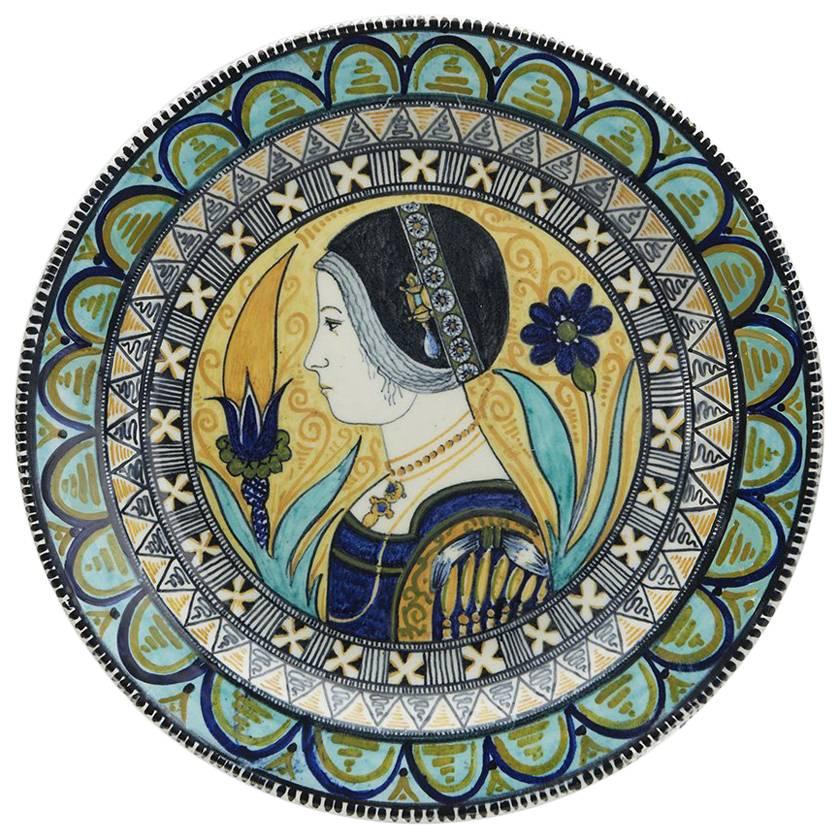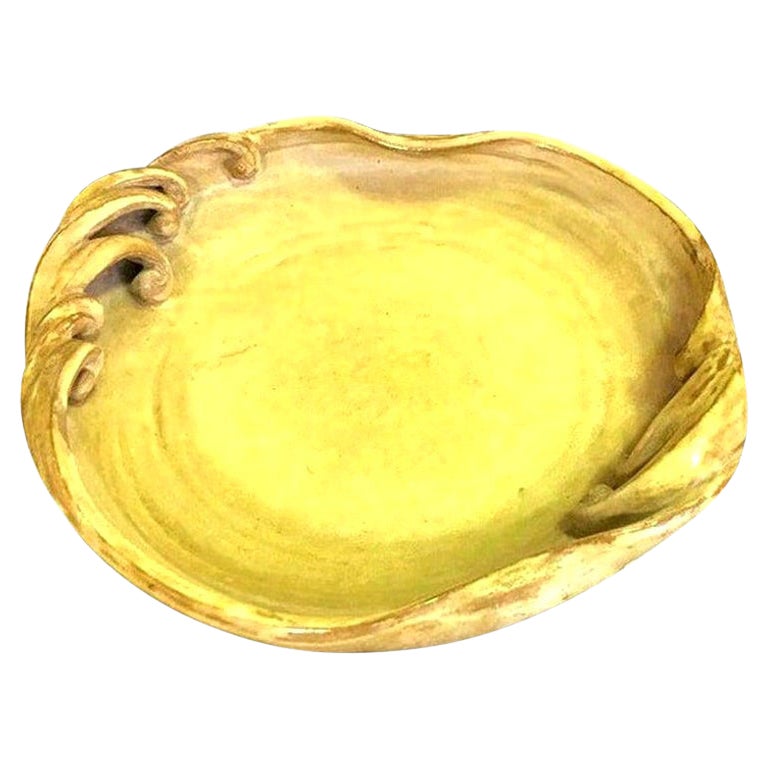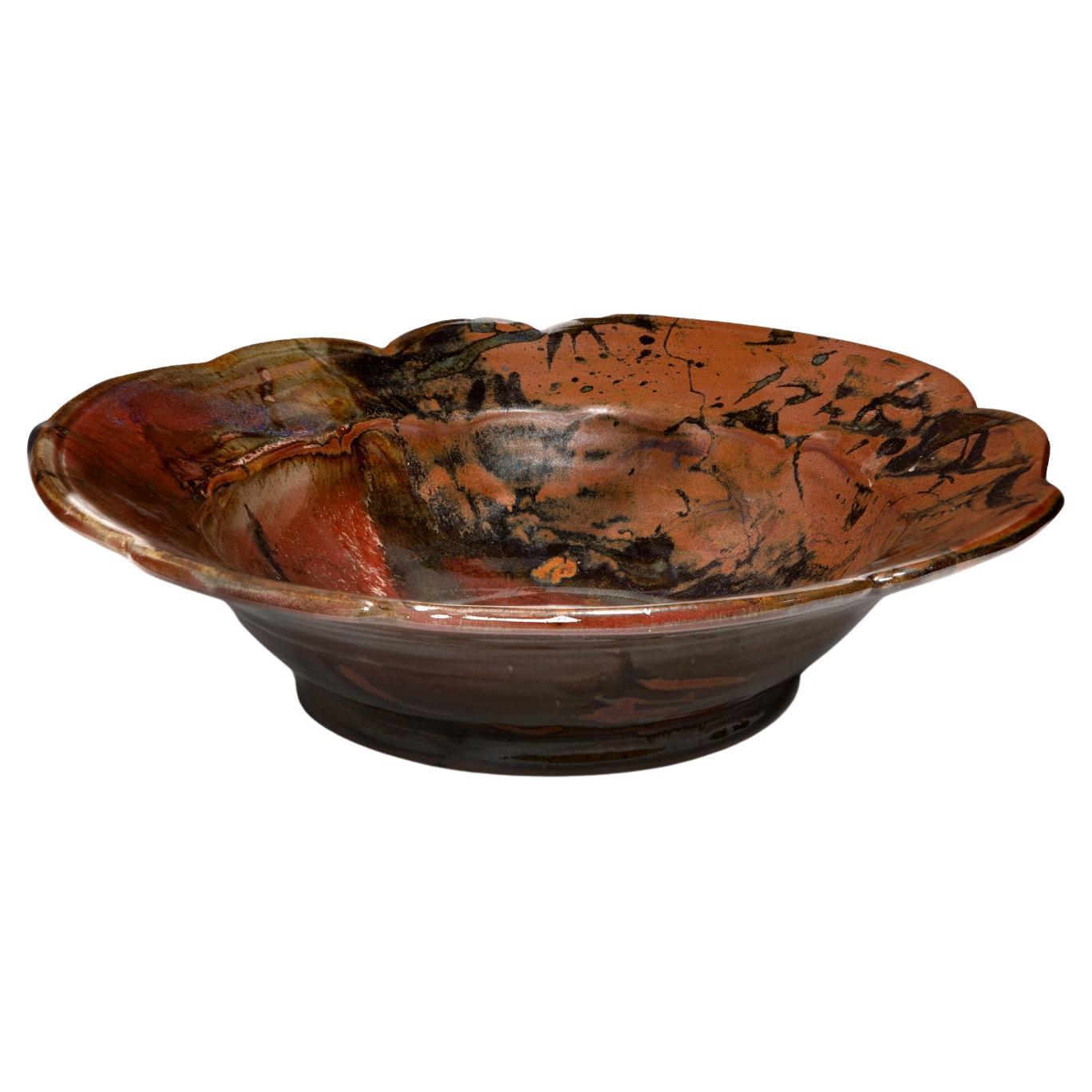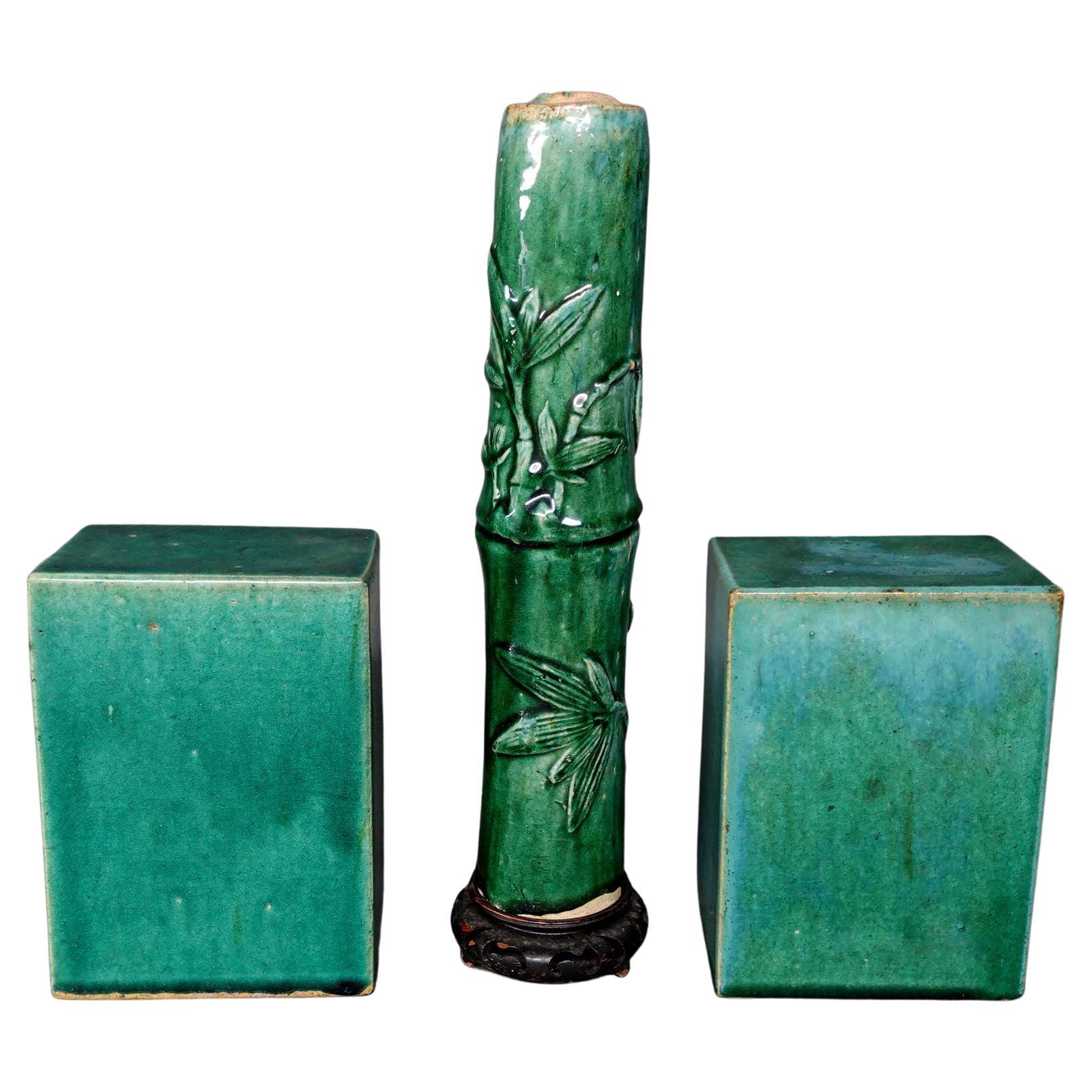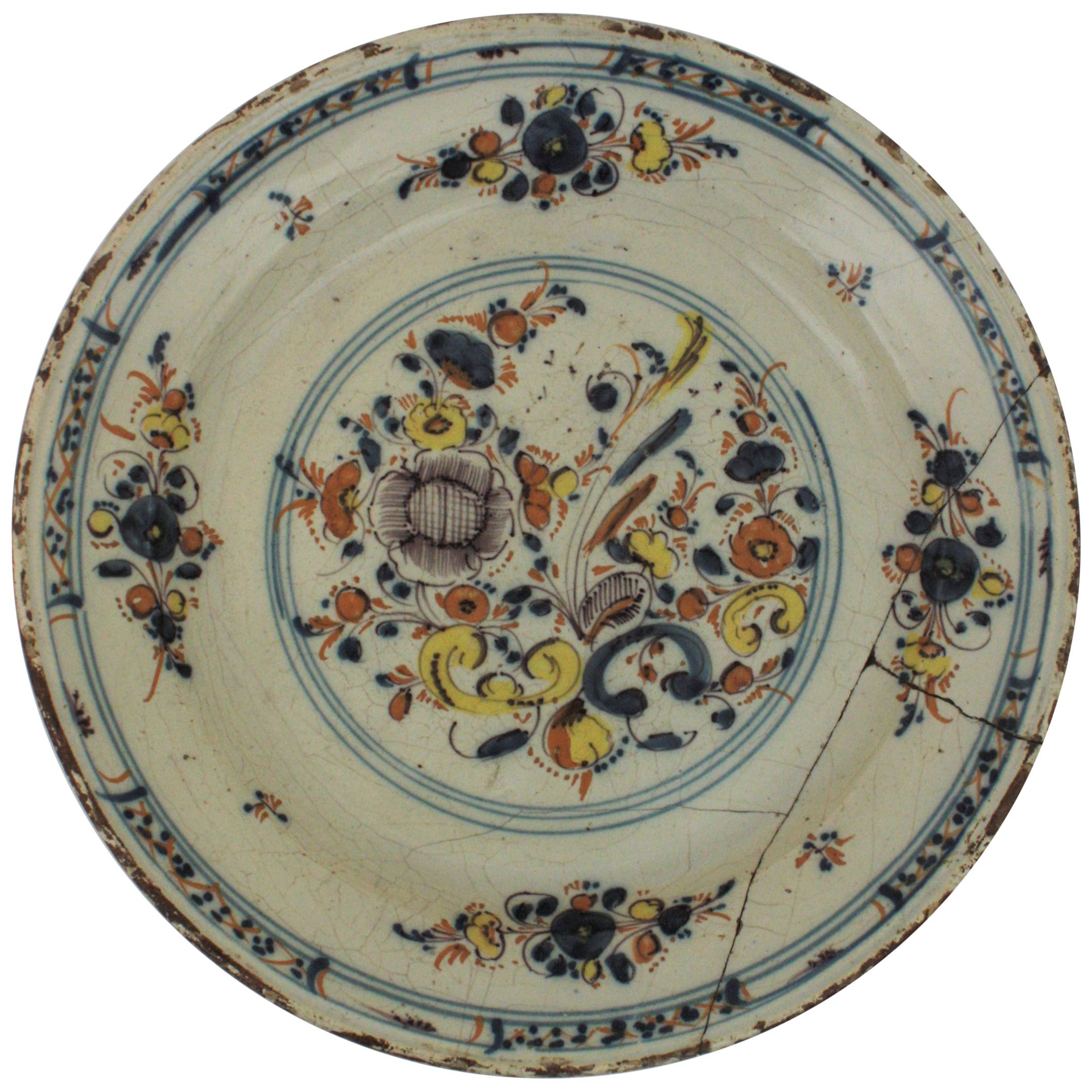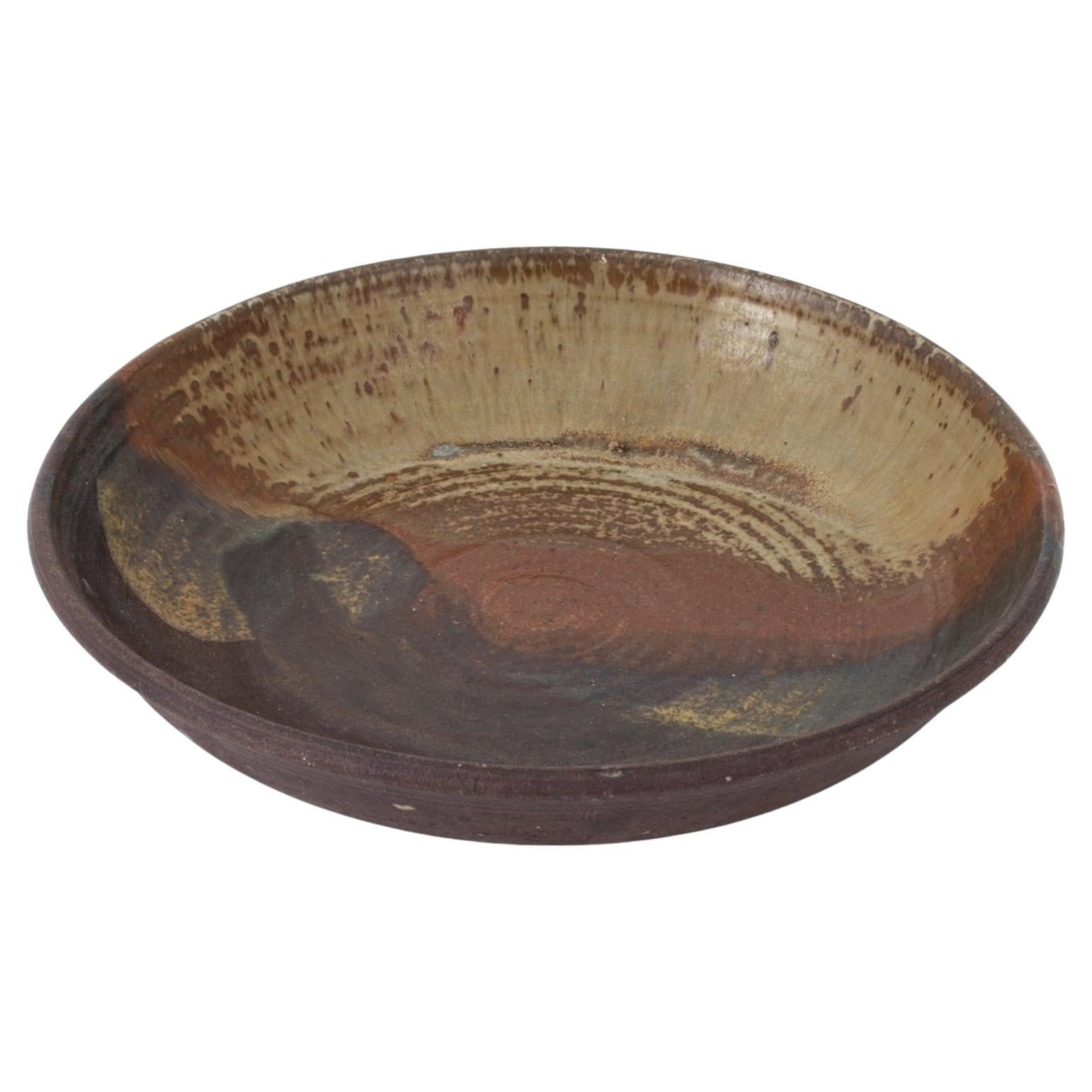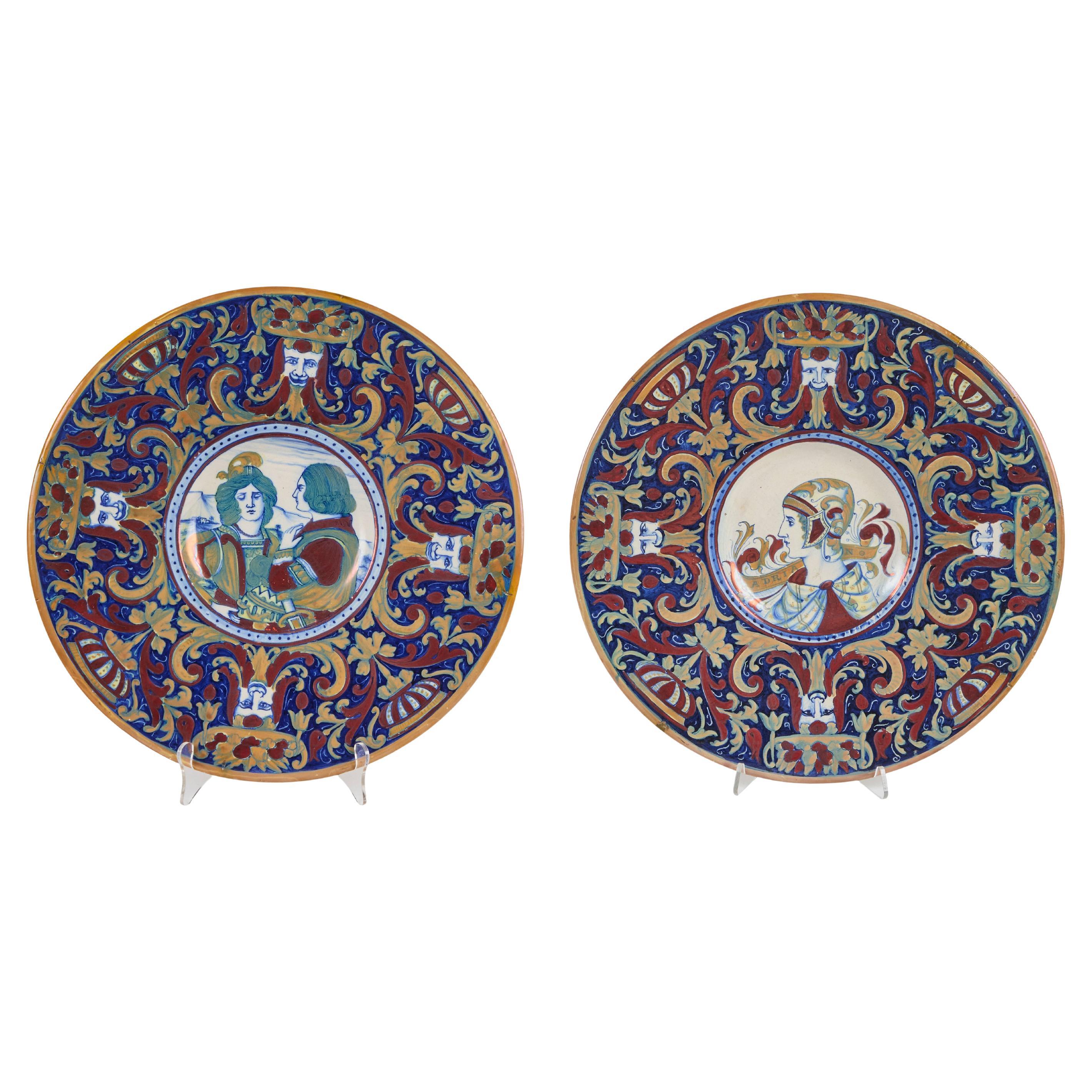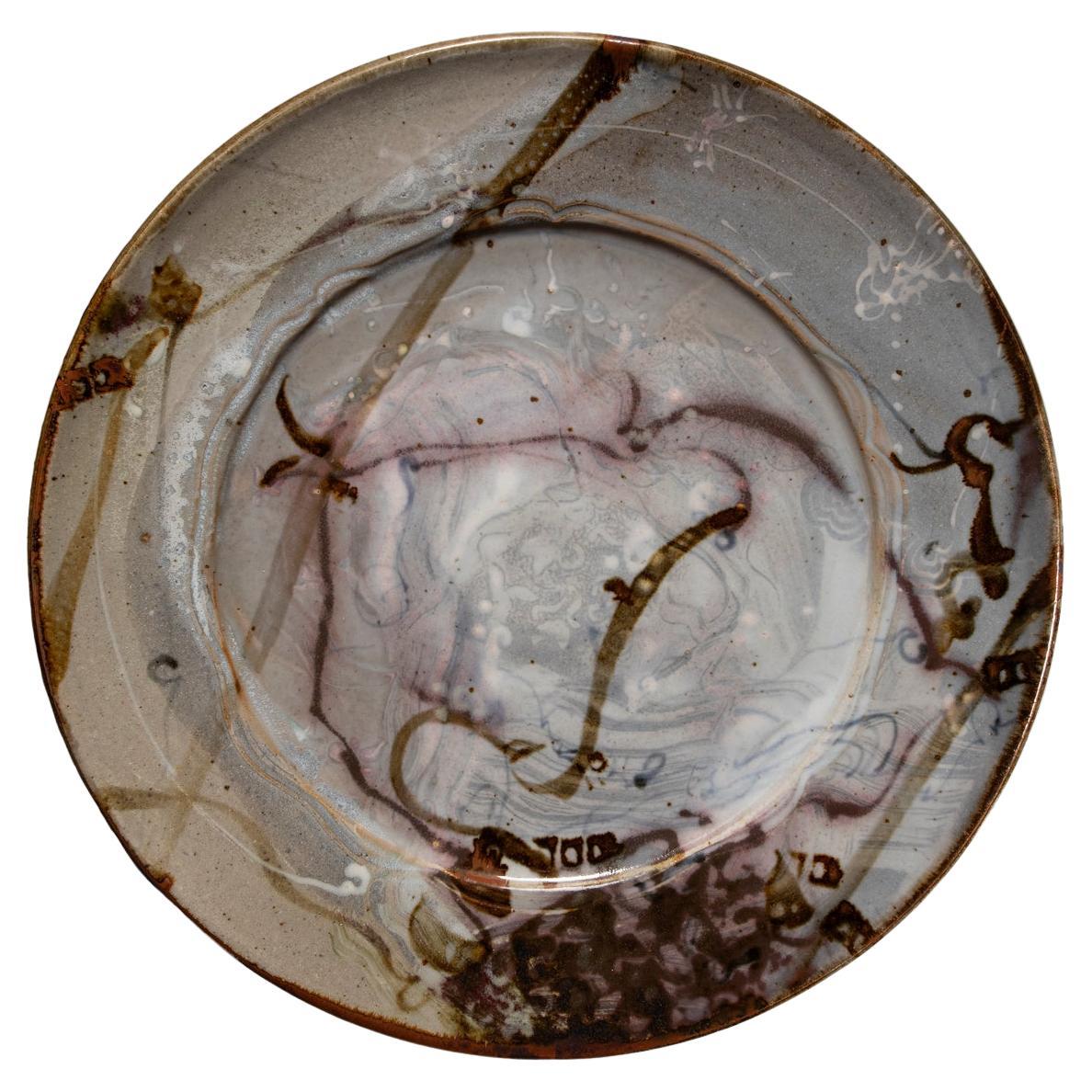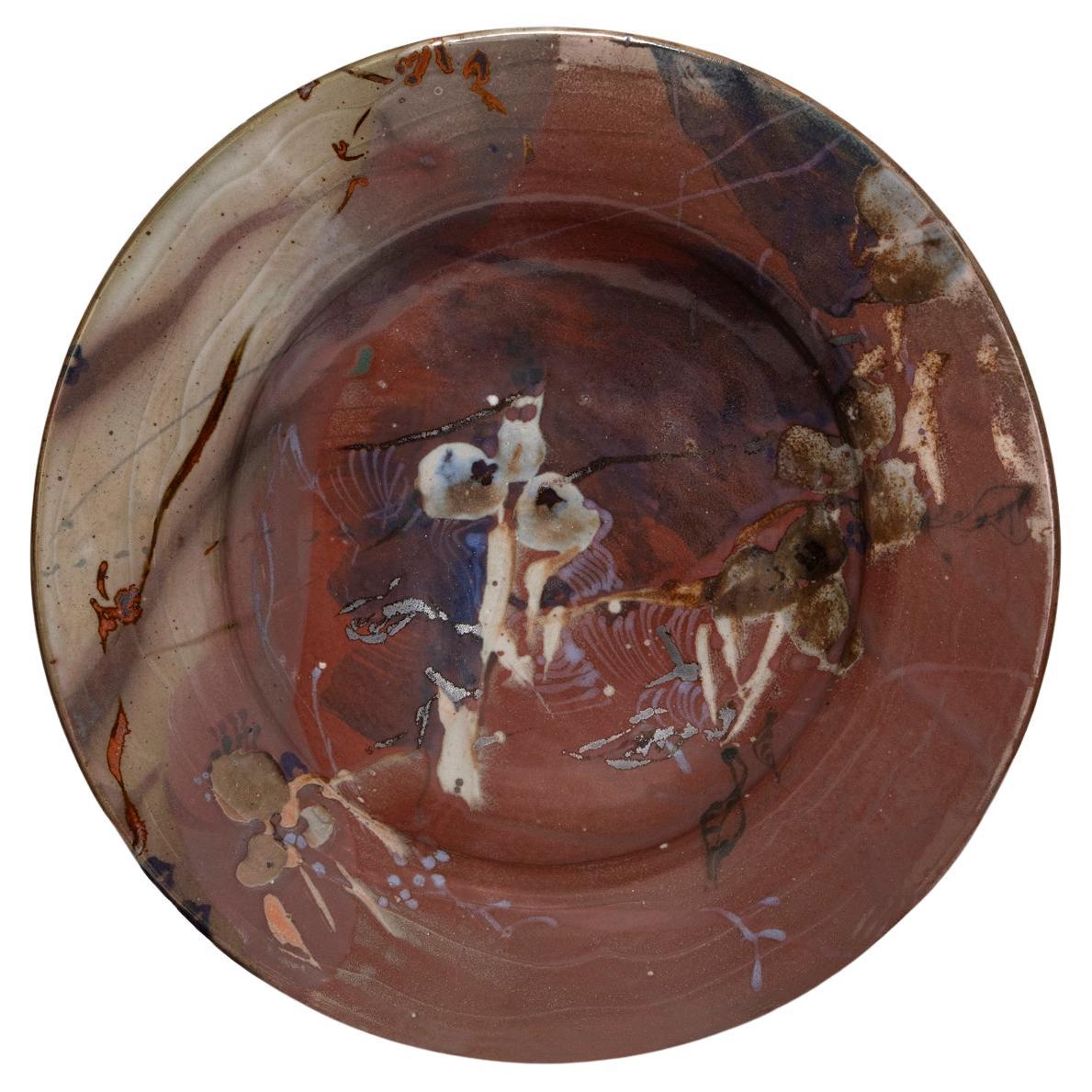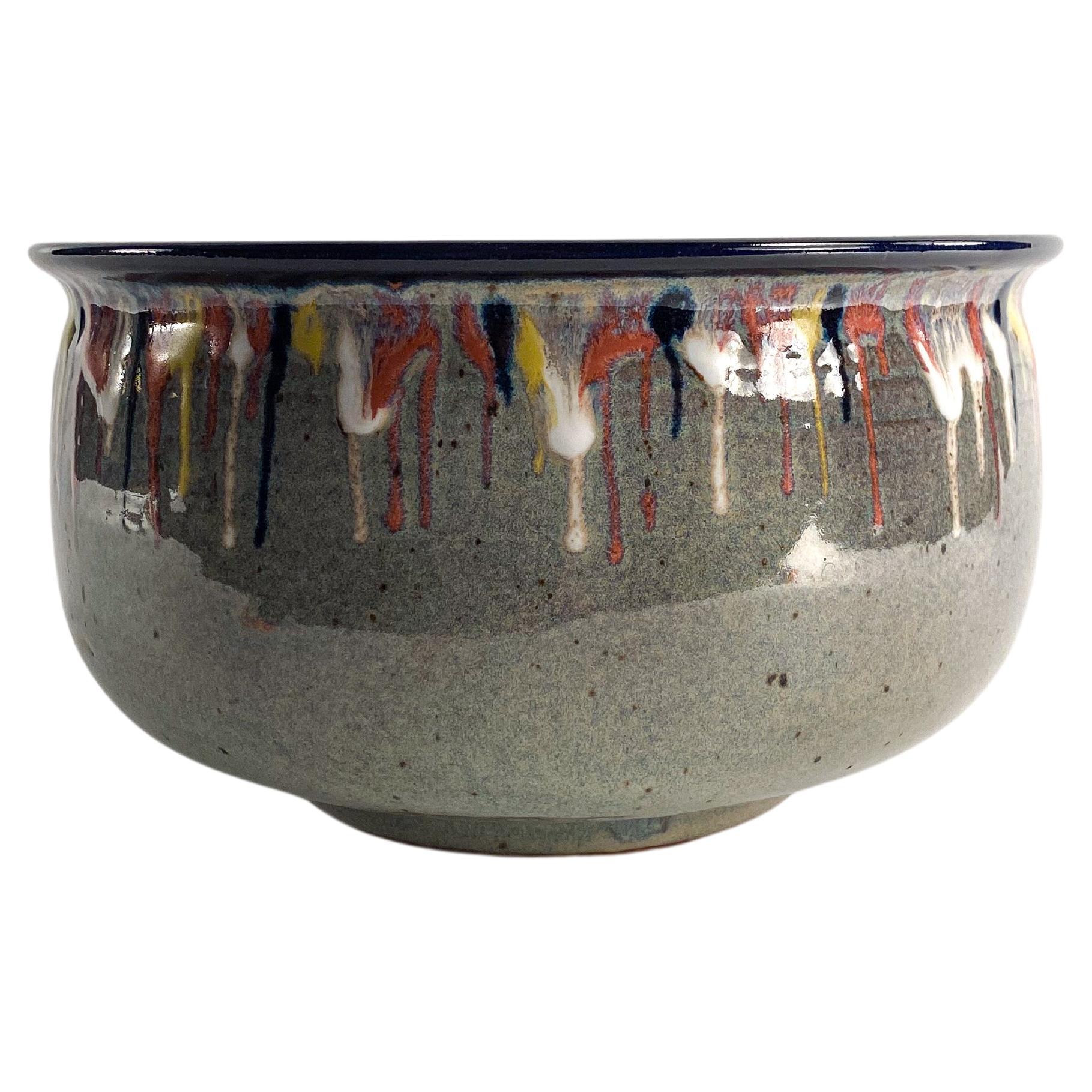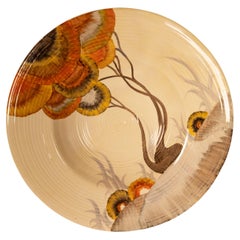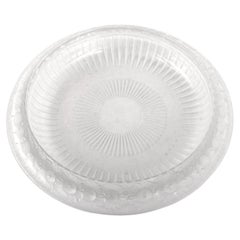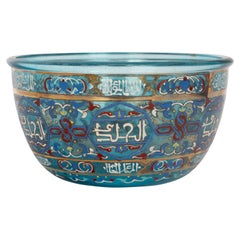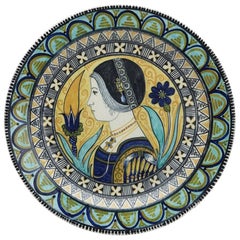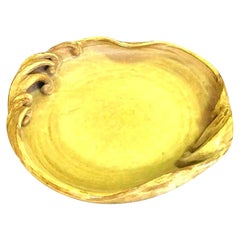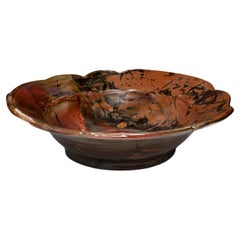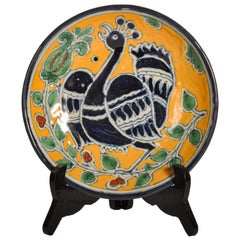
Antique Enrique Ventosa Talavera Poblano Tin-Glazed Pottery Charger Mexico 1910
View Similar Items
Want more images or videos?
Request additional images or videos from the seller
1 of 12
Antique Enrique Ventosa Talavera Poblano Tin-Glazed Pottery Charger Mexico 1910
Price:$750
$1,100List Price
About the Item
- Creator:
- Dimensions:Height: 1.5 in (3.81 cm)Diameter: 9 in (22.86 cm)
- Style:Spanish Colonial (Of the Period)
- Materials and Techniques:Earthenware,Glazed
- Place of Origin:
- Period:1910-1919
- Date of Manufacture:circa 1910
- Condition:Wear consistent with age and use. very good condition.
- Seller Location:Portland, OR
- Reference Number:Seller: C12681stDibs: LU4876128359952
About the Seller
5.0
Platinum Seller
Premium sellers with a 4.7+ rating and 24-hour response times
Established in 2000
1stDibs seller since 2019
420 sales on 1stDibs
Typical response time: 1 hour
Authenticity Guarantee
In the unlikely event there’s an issue with an item’s authenticity, contact us within 1 year for a full refund. DetailsMoney-Back Guarantee
If your item is not as described, is damaged in transit, or does not arrive, contact us within 7 days for a full refund. Details24-Hour Cancellation
You have a 24-hour grace period in which to reconsider your purchase, with no questions asked.Vetted Professional Sellers
Our world-class sellers must adhere to strict standards for service and quality, maintaining the integrity of our listings.Price-Match Guarantee
If you find that a seller listed the same item for a lower price elsewhere, we’ll match it.Trusted Global Delivery
Our best-in-class carrier network provides specialized shipping options worldwide, including custom delivery.More From This Seller
View AllAntique Monumental Art Deco Pottery Charger Plate Clarice Cliff Rhodanthe 1930
By Clarice Cliff
Located in Portland, OR
Antique Art Deco Monumental hand-painted pottery Bizarre Ware wall charger by Clarice Cliff, circa 1930.
This very large pottery charger at 18.5"...
Category
Vintage 1930s English Art Deco Ceramics
Materials
Pottery
Antique French Art Deco Large Crystal Glass "Marguerites" Bowl by Lalique, 1930s
By Lalique
Located in Portland, OR
Antique French Art Deco large crystal glass "Marguerites" bowl by Lalique, 1930s. The bowl of large size demonstrates Rene Lalique's passion for daisies. This bowl was first drawn by...
Category
Early 20th Century French Art Deco Glass
Materials
Crystal
Antique Blue Glass Islamic Mamluk Calligraphy Basin Bowl Lobmeyr or Brocard 1880
By J.L Lobmeyr, Philippe-Joseph Brocard
Located in Portland, OR
A good antique Islamic Mamluk Revival glass basin, made for the Arab/Persian market, circa 1880.
The bowl either made in France or Austria in the style of either Philippe-Joseph Broc...
Category
Antique 1880s French Islamic Decorative Bowls
Materials
Glass
Antique Danish Sterling Silver Art Nouveau Footed bowl by Georg Jensen 1915
By Georg Jensen
Located in Portland, OR
Antique Art Nouveau sterling silver Georg Jensen footed bowl, circa 1915.
The tapering flared bowl raised on a flared foot and joined with a s...
Category
Vintage 1910s Danish Art Nouveau Decorative Bowls
Materials
Sterling Silver
Antique Pair of Russian Silver Gilt Enamel Cloisonné Salts Spoons St. Petersburg
Located in Portland, OR
A good pair of antique Russian Imperial silver-gilt & cloisonné enamel salts and spoons, St. Petersburg, circa 1908.
The salts of circular form and are finely decorated with multi-c...
Category
Antique Early 1900s Russian Baltic Decorative Bowls
Materials
Silver, Enamel
Pair Antique Red Art Glass Enamel Islamic Market Bowls French or Bohemian 1900
By J.L Lobmeyr, Moser Glassworks, Philippe-Joseph Brocard
Located in Portland, OR
A pair of antique red enameled art glass bowls made for the Islamic/Persian market, made in France or Bohemia, circa 1900.
Each bowl with a pronounced band to the top, finely enameled with foliate decoration, the base of each bowl is finely decorated with raised hand-painted with raised colorful enamel decoration of fruiting vines, flowers, birds and butterflies.
The bowls are possibly by one of the Bohemian glass works like Moser or Lobmeyr or one of the French glass-works in Nancy, these glass producers made decorative art glass like this for the Islamic Arab...
Category
Antique Early 1900s French Islamic Decorative Bowls
Materials
Glass
You May Also Like
Oversized Blue and White Mexican Talavera Glazed Ceramic Bowl
By Talavera de la Reyna
Located in North Hollywood, CA
Authentic oversized very fine blue and white Mexican Talavera de la Reina glazed ceramic bowl.
Huge blue and white Mexican Talavera pottery handcrafte...
Category
Late 20th Century Mexican Folk Art Decorative Bowls
Materials
Ceramic
Torquato Castellani Majolica Renaissance Revival Tin-Glazed Charger
Located in Bishop's Stortford, Hertfordshire
An exceptional Renaissance Revival Maiolica tin-glazed plate painted with a side profile portrait of a lady within a decorative border with a line painted design to the base. The lig...
Category
Antique 1880s Italian Renaissance Revival Ceramics
Materials
Earthenware, Maiolica
$1,241 Sale Price
50% Off
Free Shipping
Japanese Asian Signed Stamped Large Ceramic Pottery Glazed Low Bowl Charger
Located in Studio City, CA
A gorgeous, substantial work. Beautifully designed and made.
Signed/ chop stamped by the artist on the base.
From a prominent Los Angeles collection of Japanese and Asian ceramics ...
Category
20th Century Japanese Showa Ceramics
Materials
Ceramic
John Glick Plum Street Pottery Ceramic Glazed Bowl/Charger Extra-large
By John Glick
Located in Bloomfield Hills, MI
The ceramic bowl is an example of the kind of work by which John Glick became so famous. He was seduced by the effects of the reduction kiln, which decreased the levels of oxygen during firing, inducing the flame to pull oxygen out of the clay and glazes changing the colors of the glazes depending on their iron and copper content. In this way he achieved the rich gradients of ochre and umber and variations in stippling and opacity. It is signed by the artist and stamped with Plum Street Pottery on the verso.
John was an American Abstract Expressionist ceramicist born in Detroit, MI. Though open to artistic experimentation, Glick was most influenced by the styles and aesthetics of Asian pottery—an inspiration that shows in his use of decorative patterns and glaze choices. He has said that he is attracted to simplicity, as well as complexity: my work continually reflects my re-examination that these two poles can coexist… or not, in a given series. Glick also took influences from master potters of Japan, notably Shoji Hamada and Kanjrio Kawai, blending their gestural embellishments of simple forms with attitudes of Abstract Expressionism. He was particularly drown to the work of Helen Frankenthaler whose soak-stain style resonated with Glick’s multi-layered glaze surfaces, which juxtaposed veils of atmospheric color with gestural marks and pattern. He spent countless hours developing and making his own tools in order to achieve previously unseen results in his work with clay and glaze.
Glick’s “Plum Tree Pottery” (now a designated historic landmark in Farmington Hills, Michigan) studio opened around 1965 and closed in the summer of 2016. It was a private studio space for John and a number of his students and assistants. He believed his shapes evolved guided by forces apparently outside his control. This was instinctual, intellectual and due to his openness to change, fusing into what he thought was the most positive force behind a potter’s approach: evolution and growth. Some have called it inspiration.
John was not only a major figure in the Detroit creative community, but in the ceramics world at large. According to Shelley Selim in her book on John, “John Glick: A Legacy in Clay” John remains: “one of the most recognizable names in the field of studio pottery – known for lecturing, publishing, and offering workshops widely – and his work has been featured in well over a hundred local, national and international exhibitions since he was a college student in the late 1950s.” Along with this John has mentored over thirty studio apprentices over five and a half decades, received numerous grants and awards for his work, and has been prolific, with an estimated 300,000 ceramic wares throughout the world.
He received his Masters from Cranbrook Academy of Art in Bloomfield Hills, Michigan, working with Maija Grotell, a legendary and influential teacher. Grotell was noted for her deep interest in the human connection to nature’s rhythms and patters. These ideas often grounded her dialog with her students including Glick, affecting, a profund and lasting influence on his future work. This famous Art Academy was designed by architect and faculty member, Eliel Saarinen who collaborated with Charles and Ray Eames on chair and furniture design. Numerous creative artists who are alumni of Cranbrook include: Harry Bertoia, Florence Knoll, Jack Lenor Larsen, Donald Lipski, Duane Hanson, Nick Cave, Hani Rashid, George Nelson, Urban Jupena (Nationally recognized fiber artist), Artis Lane (the first African-American artist to have her sculpture, "Sojourner Truth," commissioned for the Emancipation Hall in the Capital Visitor Center in Washington DC), Cory Puhlman (televised Pastry Chef extraordinaire), Thom O’Connor (Lithographs), Paul Evans (Brutalist-inspired sculpted metal furnishings), Eugene Caples (small bronze images/abstract), Morris Brose (Bronze Sculptures), Herb Babcock (blown glass), Larry Butcher (mixed media) and Lauren Anais Hussey...
Category
Late 20th Century American Decorative Dishes and Vide-Poche
Materials
Ceramic
Antique 3 Chinese Green-Glazed Pottery Items
Located in Norton, MA
3 Chinese antique with green-glazed, 2 rectangular pillows, bisque bases and interiors, and one carved in bamboo form.
The pillows measured 5.25" W x 7" H x 3.5" D
The bamboo Measu...
Category
Antique 19th Century Chinese Decorative Bowls
Materials
Porcelain
Spanish 17th Century Ceramic Circular Charger Plate, Talavera or Puente
Located in Barcelona, ES
Spanish Faience charger with floral motifs. Talavera de la Reina-Puente del Arzobispo, Toledo. Spain, late 17th century.
Hand painted in ochre, yellow, brown and blue with a central...
Category
Antique Late 17th Century Spanish Platters and Serveware
Materials
Ceramic, Earthenware, Faience, Maiolica
Recently Viewed
View AllMore Ways To Browse
Renaissance Maiolica
Antique Talavera
Spanish Charger
Italian Pottery Charger
Talavera Pottery
Charger Maiolica
Puebla Talavera
19th Century Spanish Charger
Blown Art Glass Shell
California Basket
Stoneware Bowl Glazed Large
Flat Basket
Copper Bowl Used
Black Fruit Bowls
Antique Copper Bowl Copper
Console Bowl
Vetri Murano Bowl
Porcelain Rose Bowls

